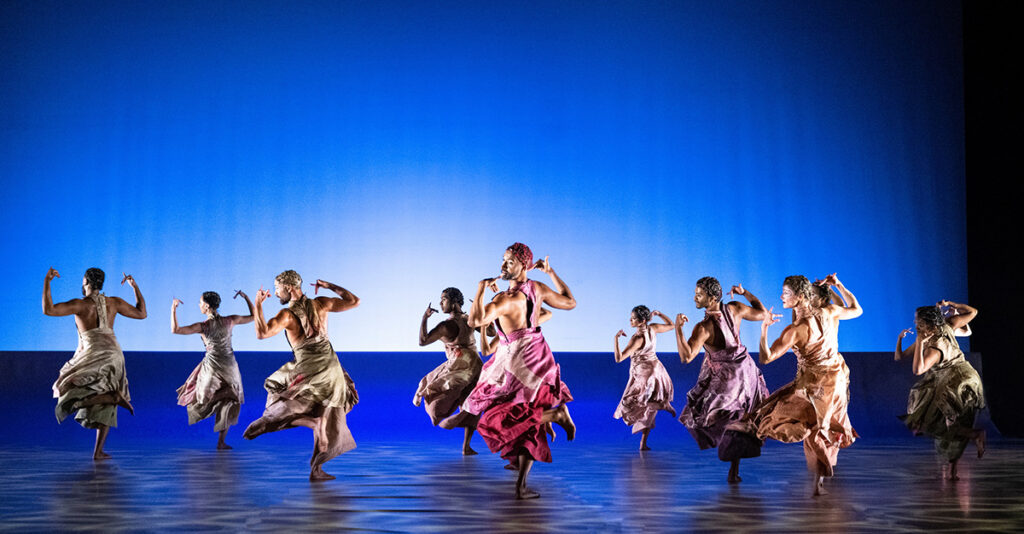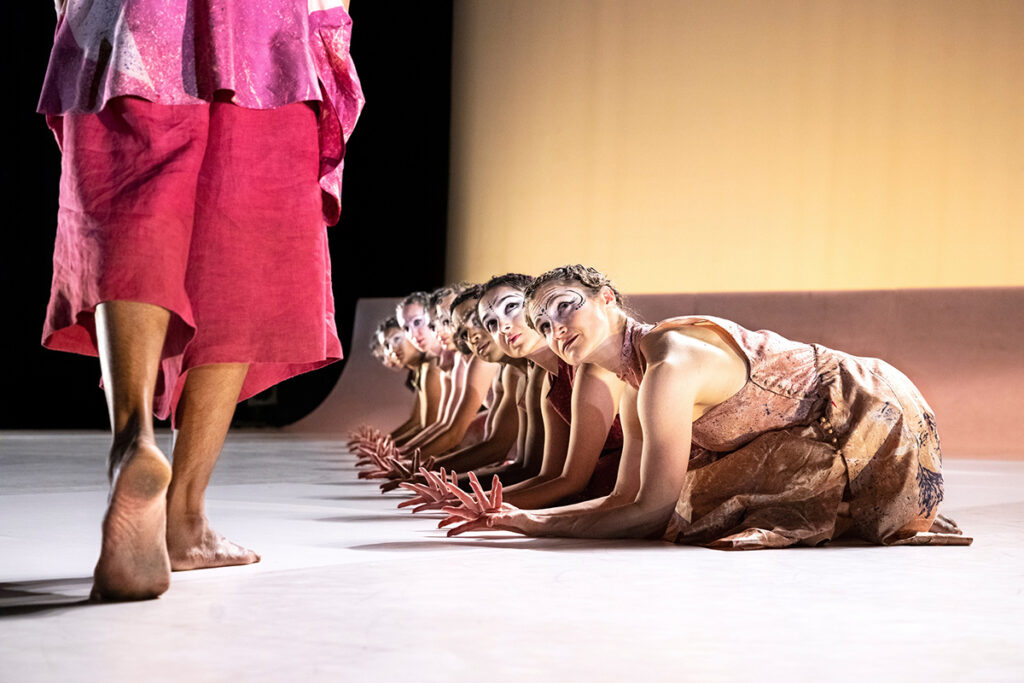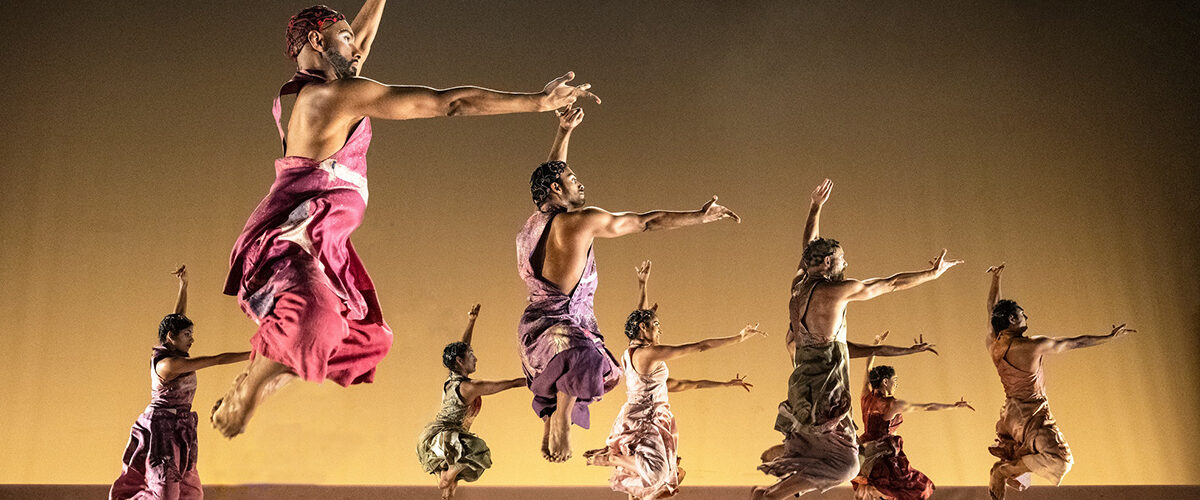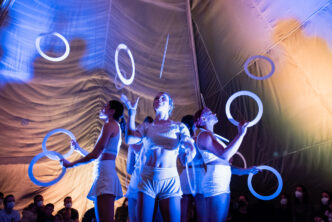Seeta Patel is surely the UK’s prime proponent of Bharatanatyam, the classical south Asian dance form. Whilst it is still the case that this form is less well known in this country than Kathak, that is in the process of changing, due in large part to Patel’s own efforts. If you have not yet seen her dance, you might have caught one of her regular appearances as mentor in the BBC’s “Young Dancer of the Year” competition.
The opening piece, danced solo as is the traditional bharatanatyam way, is called “Shree.” The story is of Mother Earth’s journey from birth to destruction (the annual cycle of life). Though there is but one dancer, we might yet view it as an ensemble performance – the dancer working in concert with musicians and, in this case lighting design.

It’s quite a challenge for this subtle, physically demanding art form – in which every part of the body, every movement and expression, including fingers and eyes – to communicate to the Lyric Theatre’s 1300 capacity space, but Patel, in her pas de deux with Rachana Jadhav’s visual art, reaches out to us all. It’s a mesmerising experience, all the more so thanks to Prathap Ramachandran’s percussion, Vijay Venkat’s flute and the astonishingly versatile vocals of Samyukta Ranganathan.
A brief interval and then the enormous stage of the Lyric opens up for the ten dancers of Seeta Patel Dance to perform a daring and innovative interpretation of Stravinsky’s, “The Rite of Spring.” The story remains one of an ancient community working together to make sense of (and appease) the unfathomable powers of nature on which their lives depend. Patel pays tribute to Nijinsky’s intent without needing to slavishly mimic his approach (which all but caused a riot in 1913’s Paris).

Her version is more abstract than Nijinsky’s, but contains (or rather barely restrains) the desperate energy of the narrative. The ensemble’s timing is impeccable, sometimes synchronised sometimes exquisitely staggered (movements rippling through the group like seismic tremors). The lighting, by Warren Letton, is pastoral yet blindingly percussive (once again one has the sense of artists understanding the needs of the piece and creating as a unit). Anshu and Jason’s unfussy but beautiful costumes bring the troupe together.
There is a brief intermezzo with a specially commissioned vocal piece by Roopa Mahadevan; a soothing lull between two titanic struggles. And this surely matters because the essence of this piece is the intense and conflicting collision of human emotions (terror, need, adoration, hope), in their desperate attempt to help Mother Earth be reborn. No Spring, no food, no chance of survival.
The climactic scene gives intimations of the maypole, of umbilical connections, of sanctuary and of birth – “Nature, red in tooth and claw” as Tennyson expressed it.
Patel’s achievement is in several ways remarkable – to marry a classical form of one continent with the classical form of another; to succeed in transforming a solo dance form into an integrated ensemble. Aside from the lovely intermezzo, she does not allow us to escape the urgency of our ancestors’ plight. It is an aesthetically ravishing assault.
There is, I trust, yet more to come from this fine dancer and gifted choreographer. Watch out for her.
Seeta Patel Dance, The Rite of Spring was at The Lowry, Salford on 21 November 2023.





